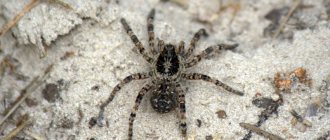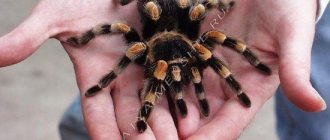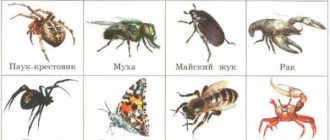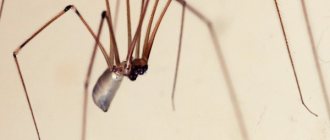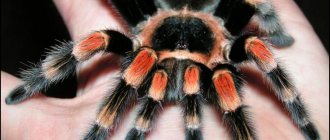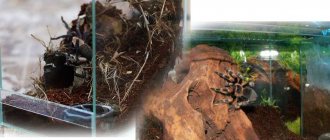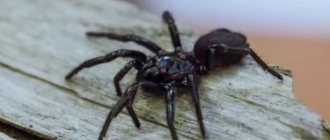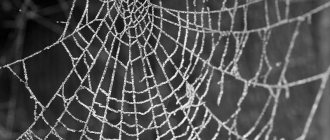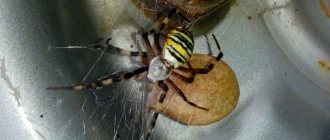Don't panic: tarantulas and praying mantises are already in Belarus
August, Mozyr district, a team of archaeologists on a country road finds a beautiful tarantula in its prime. Here and there people began to notice praying mantises. Many look with horror at the photo with the spider, others meaningfully remark: “Climate!” Having brought all the speculations, beliefs and rumors together, we head to the Academy of Sciences, namely, to the General Director of the State Research and Production Association “Scientific and Practical Center of the National Academy of Sciences of Belarus for Bioresources” Oleg Borodin.
- What kind of invasion? - we ask him.
- This is not an invasion, tarantulas have always lived here. The first registrations of spiders were made back in 1928 in the vicinity of Rogachev. It’s just that now people are starting to see them more often. And Belarusians, due to their activity and greater environmental awareness, began to pay attention to this. In addition, smartphones and cameras have appeared that make it possible to quickly register animals. That's why the general public learns about them. I will add that back in the 80s of the last century, our employees found wasps that parasitize precisely on these spiders. And if there were wasps, then there were spiders.
— Where do “Belarusian” tarantulas
- In the burrows. Moreover, they put out a signal web from it, and if someone touches it, the spider jumps out and grabs the prey. As for their habitat, tarantulas are widespread in the forest-steppe zone of Eurasia, from southern Europe to China.
— Is this species dangerous for humans?
— Anything that can bite is potentially dangerous to humans. This species has powerful claw-shaped chelicerae and a toxin that can be dangerous to humans.
- Are chelicerae like jaws? I immediately remember the look of the predator from the film of the same name...
- Yes, this is a type of grasping mouthparts, modified limbs.
— Is the dose of poison not lethal for those who do not have allergies?
- It is believed that no. But from this point of view, a hornet attack is fraught with disastrous consequences for humans. Even if he doesn't have allergies. Therefore, I would not highlight the presence of poison in spiders as a terrible situation.
- What about pets? Are they in more danger?
- Yes. In the southern regions of the CIS and Central Asia, small cattle suffer. But in our conditions - and I am absolutely sure of this - the number of tarantulas is not large. They have always been there, and since we haven’t encountered them so often, there’s no need to panic. Yes, and it’s good. On the contrary, attention should be paid to their presence in the nature of Belarus. Like any toxic species, it is of interest to the pharmaceutical industry. For her, such spiders are raw materials.
- Okay, let's go back to the forest. If you're looking for a tarantula hole, what does it look like?
- The size of a five-kopeck coin. But it’s not easy to find: you need damp, well-warmed places. And, let me emphasize once again, it does not occur very often. And it’s not exactly a forest species.
— That is, in a forest clearing there is no threat to a person?
- No. These spiders prefer open areas closer to bodies of water. But the chances of meeting them are slim. And to the question whether the tarantula avoids humans, the answer will be unequivocal: yes, like any large object that may pose a danger. In order for a tarantula to understand what a person is in principle, it needs to have at least some kind of primitive intelligence. And this is from the realm of fantasy.
— What can you say about the praying mantis? Are the appearance of tarantulas and praying mantises related to global climate change?
— Even 5-6 thousand years ago, the territory of Belarus had climatic conditions that we are still far from achieving. The zones of broad-leaved forests, which are now widespread in the central part of the country and in the north of Polesie, then reached the coast of the Arctic Ocean. Thanks to the preserved collections of animals, primarily insects, we can clearly prove that some species that are now in Polesie were found in the Vitebsk region in fairly large quantities. This fact does not allow us to write off such registrations as random finds. Therefore, it is impossible to talk about some kind of catastrophic climate change that leads to serious degradation of fauna and flora. Here another question arises: why does all this happen?
We are now at a stage where we are seeing an expansion of the boundaries of the modern habitat of mantises and tarantulas. In particular, the first registration of a praying mantis in Belarus was made in the 1910s in the Gomel region. The fact that insects are now found throughout the country is excellent, because there is no particular harm from them. On the contrary, these are representatives of useful fauna.
The first discovery of a praying mantis in modern times in natural biotopes was recorded in 2008 in the Berezinsky Biosphere Reserve. Its spread now is an indicator of some changes. But we have to look at what these changes are. And this requires targeted research. The praying mantis is a visible insect. But there are tens of thousands of other species living in Belarus that also respond to such changes. And each in his own way. Some are invisible to us humans, some are extremely expressive. And if you consider that among them there are representatives of beneficial and harmful fauna, then this already has a direct economic effect. And the question is not how much the reaction of this or that beetle to changing environmental conditions costs in monetary terms, but how it will affect our environment.
— So the appearance of these insects is not a direct result of climate warming?
— In my opinion, the concept of “climate warming”, in principle, requires very serious discussions. It is better to use the term “climate change” rather than “warming.” And what changes these are is another question for another discussion.
— What is the main conclusion?
— There is no need to panic. If you meet a tarantula, consider it lucky, because it is not easy to see!
Clean
South Russian tarantulas are hunters.
Their food is everything that runs along the surface of the soil, but does not greatly exceed the size of the spider itself: beetles, flies, mosquitoes, midges, caterpillars, worms, ground beetles. But the tarantulas themselves are lucky, few people like to feast on them. Except for wasps and birds. Mizgiri, like all arachnids, have extraintestinal digestion. They attack the victim, once within jumping distance, and approach silently and unnoticed. The poison is deftly injected along with the contents of the midgut, immobilizing the prey. Then the spider sucks the liquid from the victim’s body, like a cocktail from a straw. And what he doesn’t finish, he throws away away from himself. Sort of a neat guy.
Another feature of the South Russian tarantula is that it does not weave a web for hunting. It is needed only to protect the home - it seals the entrance from unwanted guests. The spider lives in a hole up to 50 cm . He spends time in it during the day, and from it he tracks down unwary living creatures. Mizgir rarely goes far from the hole, he does not like to be active much and is poorly oriented in space.
Natural enemies of tarantula spiders
Photo: Black tarantula spider
The tarantula has quite a few enemies. The main culprits in the death of arthropods are birds, since they are part of the diet of birds. Wasps encroach on the life of arachnids, just as spiders do with their victims. They inject poison into the tarantula's body, paralyzing the predator.
They then lay eggs inside the spider. Parasites live and develop, after which they get out. Natural enemies include some types of ants and mantises, which are not at all picky about food and eat everything that moves. Frogs and lizards are not averse to eating tarantulas.
The most dangerous enemy is still the same spider. Arthropods tend to eat each other. A female, during the process of fertilization, can encroach on the life of a male individual, like a female praying mantis, or eat her offspring if she cannot trap some insect.
There is continuous hostility between tarantulas and mole crickets. Their habitats overlap. Mole crickets dig the soil, where spiders often climb. Sometimes individuals manage to escape. Wounded or molting arthropods usually become food for the enemy.
In general, the population suffers most in early spring. When lethargic and sleepy arachnids crawl out of their shelters, the mole cricket is right there. Sometimes they climb into spider holes and attack tarantulas with their forelimbs, delivering heavy blows. When the spider loses a lot of blood, the mole cricket eats it.
Keeping the South Russian tarantula at home
The ability to control oneself, attentiveness, and caution are required from those who decide to have a Mizgir as a pet.
These spiders are very interesting to watch, they are funny, smart, so there are many people who are fascinated by them. A terrarium or an aquarium with a lid can become a home for a misgir. Ventilation is required. The minimum dimensions of the arachnarium are calculated taking into account the paw span of the future resident - the length and width should be 3 times greater. The spider can jump 20 cm in height, so this must be taken into account.
The bottom of the arachnarium is covered with soil: sand, turf, coconut fiber, vermiculite or peat. The height of the layer must be at least 30 cm so that the mizgir can make a full-fledged burrow.
Mizgir from the side
The pet will love to sunbathe on a piece of driftwood under a lamp; a small number of plants and constant moistening of the substrate are also useful. He can bathe in the installed drinking bowl. Feeding is not difficult - flies, ground beetles, crickets, cockroaches, mosquitoes, etc. are sold in pet stores, but you can catch them yourself.
Cleaning is carried out once every 2 months by luring the spider out with food or a small ball on a string and transplanting it into another container. In winter, the spider can hibernate, sealing the entrance to the hole, or simply become less active if the temperature has not changed and remains at 20-30 degrees. Tarantulas are considered one of the most interesting objects to observe, but children should not have them
Despite its size, a spider cannot be called a toy; any careless movement can cause aggression. The shaggy handsome man will bring many pleasant moments to teenagers and adults, entertaining them with hunting and home improvement.
Video
https://youtube.com/watch?v=GXeiyy88bkY
Sources
- https://beetlestop.ru/yuzhnorusskiy-tarantul/https://www.zoopicture.ru/yuzhnorusskij-tarantul/https://pets2.me/bok/1803-yuzhnorusskiy-tarantul-kak-vyglyadit-gde-obitaet- chem-kormit-v-domashnih-usloviyah.htmlhttps://ukusili.net/chto-delat-pri-ukuse-tarantula/https://simple-fauna.ru/spiders/yuzhnorusskij-tarantul-ili-mizgir/https: //ru.wikipedia.org/wiki/South Russian_tarantulahttps://apest.ru/pauki/vidy-paukov/pauk-mizgir/
So-so mother
Mizgir is a fairly typical and widespread representative of the arachnid class in our region, therefore it is not in the Belgorod Red Book. But he was included in the books of the Samara region, Tatarstan and the Middle Urals.
“We recently found a new species in the Korochansky district near the reservoir - the “slender” tarantula. This is an elegant spider that most often lives in Crimea and nearby areas. It is distinguished from the South Russian by the color of its abdomen - not black, but bright red. Now we have handed it over to colleagues from Rostov for research, we are waiting for the results,” the professor shares.
Females of the South Russian tarantula live about five years , the life of males is shorter - three to four years . In winter, they hibernate after eating their fill and sealing their burrow with grass or cobwebs. If they are disturbed during wintering, they will die due to lack of food.
The end of April for the wolf spider is the beginning of a new life. He crawls out, basks in the sun, builds new homes or renovates old ones. Begets offspring in May-June. The female weaves a cocoon, immediately laying eggs, and carries it on herself until the spiderlings begin to hatch. As soon as she feels movement, she immediately throws off the cocoon, chews it, allowing them to climb on top of her, and rolls it around. When the kids begin to feed themselves, it is better for them to quickly and far away from the misgirikha, otherwise it will eat everyone. Over her entire life, she can give birth to up to 2 thousand spiders , but only a small part will survive to adulthood. The rest will go to feed others.
Instinct from primates
Spiders are believed to bring profit and good luck. But most often they bring fear. Arachnophobia - fear of spiders - is one of the most common human phobias. According to legend, Arachne was a skilled and beautiful weaver. Proud of her abilities, she wove a blanket from the finest threads, on it were depicted gods who had fallen into human passions. Her work turned out to be more beautiful than Athena's. In a fit of anger, the goddess turned Arachne into a spider.
There is an opinion that arachnophobia in humans is a hereditary instinct from primates, a protective reflex. Alexander Prisny identifies more reasons:
“The population is constantly migrating. In some regions there are truly dangerous spiders, and when they come to other regions, people begin to be afraid of everyone. It is commonly believed that spiders are unpleasant creatures that live in corners and need to be gotten rid of. Just in case, I’ll get scared and kill him, otherwise he’ll suddenly get angry at me and bite me. But there is no point in killing tarantulas for humans. In some countries, they are bred directly on the verandas of cafes or restaurants to protect them from mosquitoes and other harmful creatures.”
Ekaterina Gavrilenko
Description of the tarantula
The tarantula is part of the wolf spider family, although they are constantly trying to mate it with tarantula spiders (lat. theraphosidae). Tarantulas differ from the latter in the direction of movement of the jaws.
Chelicerae (due to poisonous ducts on their jagged tops) perform two functions - an oral appendage and an attack/defense weapon.
The most attractive thing about the tarantula’s appearance is its 3 rows of shiny eyes: the first (bottom) row consists of four tiny “beads”, 2 larger eyes are “mounted” on top of them, and, finally, another pair is placed on the sides.
Eight spider “eyepieces” vigilantly monitor what is happening, distinguishing light and shadow, as well as the silhouettes of familiar insects at an interval of up to 30 cm. The spider boasts excellent hearing - it can hear human steps 15 km away.
The tarantula grows, depending on the variety, up to 2.5 – 10 cm (with a limb span of 30 centimeters).
Females are larger than their partners, often gaining a record weight of 90 grams.
The color of the spider can vary and depends on its habitat. Thus, the South Russian tarantula usually displays a brown, slightly reddish or sandy-gray color with black spots.
Unusual tourists
One of the latest sensational discoveries was evidence of the existence of the golden jackal on the territory of Belarus. According to Vadim PROKOPCHUK , an employee of the scientific department the Belovezhskaya Pushcha National Park , this animal has joined the official list of mammals of Belarus. A rare species for our region was caught during a hunt on December 9, 2022 in the Kobrin region. During a detailed DNA analysis, specialists from the scientific and practical center of the State Committee for Forensic Expertise confirmed that the tissue samples belonged to an adult male golden jackal.
Why the jackal moves north is not known exactly. According to Doctor of Biological Sciences , Professor of the Faculty of Biology of BSU Vasily GRICHIK , the reason for this may be global warming and winters with little snow.
Another reason for discussion among scientists was the appearance of a forest cat in the Narovlya region, which had not been seen in Belarus since the 1930s. It was possible to photograph the animal on June 22, 2022 using a camera trap, which was placed in the former settlement of Rojava in the exclusion zone.
Senior researcher at the Laboratory of Molecular Zoology of Center of the National of Belarus for Bioresources , Valery DOMBROVSKY , after a detailed study of the photo, expressed the opinion that the photo could indeed be a forest cat. But the head of the laboratory of molecular zoology of the Scientific and Practical Center for Bioresources of the National Academy of of Belarus Mikhail NIKIFOROV , is convinced that one photograph is not enough as proof that the forest cat has returned to us.
Reach Alaska. Why did the USSR want to block the Bering Strait? More details
Why is a tarantula dangerous?
As mentioned earlier, the bite of a tarantula, no matter what species it belongs to, is still poisonous. How dangerous a tarantula is depends on the age of the predator, race, gender, season and some other factors.
Let's consider the toxicity of these insects, based on the time of year:
- April
- just waking up after winter, tarantulas are very inert, their poison is not too toxic. - May
- in the middle of this month there comes a period when females lay eggs. Spiders become very active, and the toxicity of the poison increases by 2 times. - June
- mating and migration occur at the beginning of the month; the venom of predators at this time is 3 times more toxic. - August
- spiders, especially young females, have less toxic venom. - September
- before wintering, the toxicity of the venom of hairy insects is reduced by 2 times.
Why is the tarantula spider dangerous for living beings? It is not for nothing that this creature is considered a predator; its bite has a neurogenic effect on the nervous system. The venom of this spider can lead to neuromuscular disorders, disorders of the respiratory and cardiovascular systems
So you need to be extremely careful with this cute and fluffy creature of nature.
